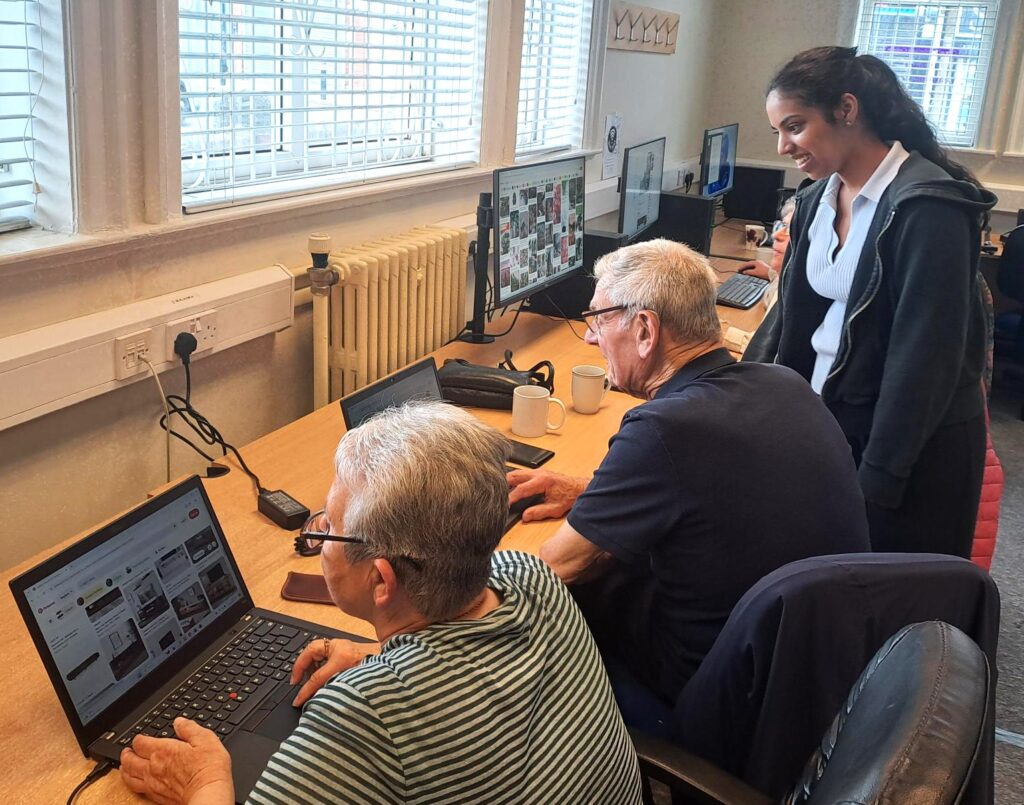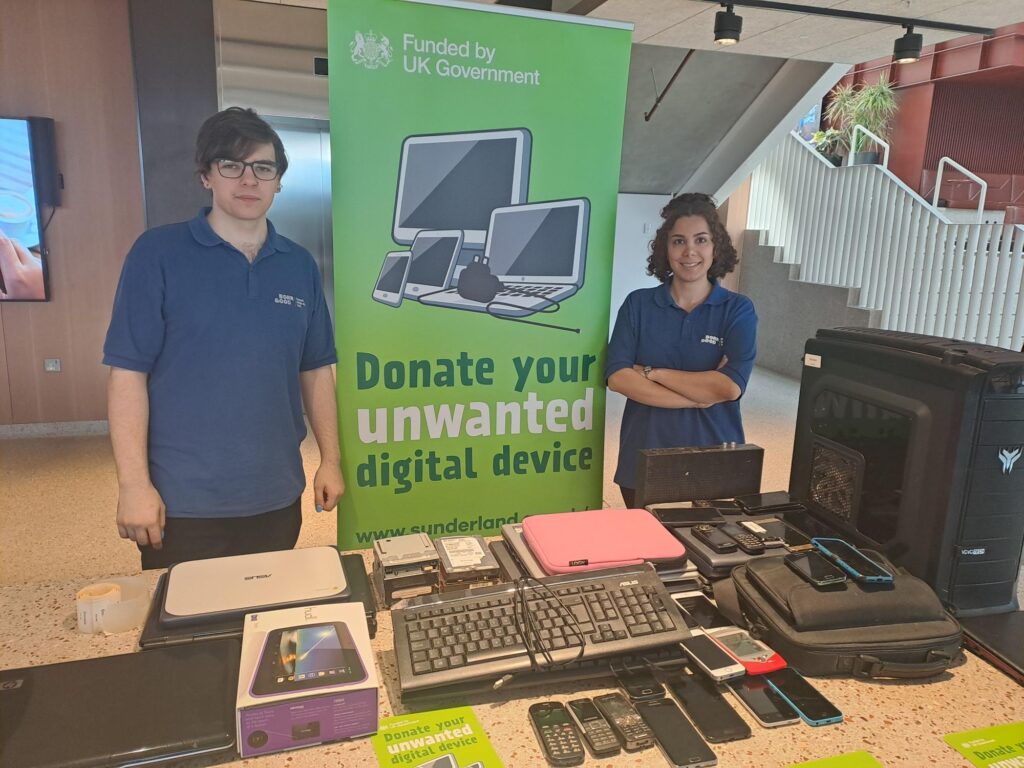How We Did It: Bridging the digital divide – keeping communities connected

Bridging the digital divide is essential for local authorities striving to create inclusive and thriving communities. By addressing digital literacy challenges, individuals are empowered to access opportunities more effectively and engage with local and broader initiatives that impact their lives. Increasing digital accessibility and competence not only supports individuals’ agency but also strengthens community connections and participation.
We put Nicol McConnell in our ‘How We Did It’ hot seat to gain an understanding of Sunderland City Council’s work towards making Sunderland a fully digitally inclusive city. She shared insights into the journey of their work, demonstrating Sunderland’s commitment to digital inclusion, connectivity, and innovation to ensure that technology drives real social impact for residents, businesses, and communities.
Interview highlights
On setting up Digital Health Hubs
The Digital Health Hubs came from setting up warm spaces for people in our communities, and we received funding to help ensure digital literacy across the city. We funded the connectivity in every public and staff area within the building, as part of each Digital Health Hub. So, no matter where people were, they could either use their own devices or the organisation’s devices.
People would usually come to use the Hub to participate in activities that were on offer, and then we would incorporate a digital aspect. That helped with motivation and finding the hook that would get them interested in the online world. There was no blueprint for how this was done. It was very informal and tailored to the local needs within that community, focusing on what would work best for them.
On learning through doing
In the first quarter of this project, we established dedicated digital sessions, but they didn’t work well. People didn’t want to fill in forms, they didn’t want to sit in the classroom, they didn’t want to be told what they were going to be taught.
That’s when we realised we had to scrap the paperwork and personal learning plans. So, when people came through the door to attend the knitting class, for instance, that’s because they were interested in learning how to pearl one, drop one.
The motivation to get them online came from letting them know that they could get free knitting patterns online. For them, that was the light bulb moment, and we could show them the skill of accessing patterns. They would then want to come back at their own time to explore knitting patterns or something else. So, by trying to find that motivation with different groups, that hook enabled us to engage with them on a new way of working.

On measuring impact
We were conscious from the outset that we wanted to measure impact immediately, as soon as we hit the live button on the project.
We installed sensors in all the digital hubs across the city, which measured the buildings’ temperatures, indicating whether it was too warm or too cold. We also added other sensors, such as a people counter.
This meant that at each site, we could track the number of people entering each building, allowing us to filter the data by month, day, week, or location. We could also track a Hub’s peak usage times and schedule different sessions to build usage levels throughout the day.
We also wanted to measure connectivity. We knew that people were attending the Hubs, but how many of them were actually using the digital hub? So, we measured this by tracking individual log-ons to the website.
Measuring this way prompts you to consider the bigger picture, to help you understand why people aren’t using spaces and trying out different sessions. This prompts you to consider adapting spaces to be more welcoming and accessible for residents.
On using different measurements
The other way we measured usage was by using QR codes. This was a tough decision, because it’s a digital inclusion project and we’re trying to engage with people who aren’t online. How do we know they will be able to use a QR code? The simple answer is that we know they won’t be able to use a QR code.
That’s why we thought we’d see how they react to this. It was interesting because it served as an icebreaker. We trained volunteers at each digital hub to support people in using QR codes. So, when people came in to access the device, Wi-Fi, or one-to-one support, for example, if it was their first time in that building, they would have to scan the QR code.
There were a variety of reactions to this, but for those who were willing to give it a try, it meant they were learning a digital skill immediately, as they began to understand how to use a QR code.
We also had them complete a drop-down Microsoft form, which helped them start to build confidence. They thought they were great because they had scanned a QR code and filled in a form, and it was a real boost right at the beginning of their interaction.
The great thing about the QR codes was that they didn’t always work. Some people were scared of them, but it meant that we could support them in a different way and work with them on their confidence around the fear factor of technology.
On analysing the data
All this data collection allowed us to compile a wealth of information by postcode or by Hub, which demonstrated impact, and enabled us to create a digital inclusion plan that covers the city. The data helped us understand and identify specific cohorts that were really thriving or using a hub well. Then it was a matter of considering the bigger picture for that cohort and exploring other resources to engage with that group of people.
The entire programme engaged approximately 10,000 people over the initial 12-month period. But it wasn’t just the residents and communities who benefitted. It also helped to engage the centre managers, council workers and local businesses, who could see the value in this project and offer help and support.
On internal engagement
The project took place at a time of transformation within the council, as services were being realigned. We had great support from the senior leadership and the public health team. There was no door that was closed to us. We were given the freedom to connect easily, knowing that we were all going to benefit by improving digital inclusion across the city.
On digital donation
We had nine of our Hubs offer to take in digital device donations. We received over a thousand devices from residents within three months. Although not all of these were what we wanted, there were some kettles and toasters among them!

Once we’d sifted through the donations, we were able to hand out 124 pieces of kit to households where people were digitally excluded.
And again, every one of those households that received a kit had a story behind it. We identified the reasons for their digital exclusion, such as affordability, connectivity issues, and a lack of skills, and provided support to enable them to use the kit effectively. For instance, if they have a device but no connectivity, we offer them SIM cards. If they didn’t have the skills to work with the technology, we aimed to equip them with the necessary skills and the confidence to go online safely.
What’s next for this project?
We’ve secured additional funding through the UK Shared Prosperity scheme to develop 10 more hubs. That will mean every ward within the city will have a digital health hub.
With all the data we have gathered, we believe we can push the boundaries a little further and potentially collaborate with different groups of people. So, we are going to pilot some work with prison leavers and women at risk of domestic violence, and homeless people.
Photos from Sunderland City Council.
 Join our mailing list
Join our mailing list

